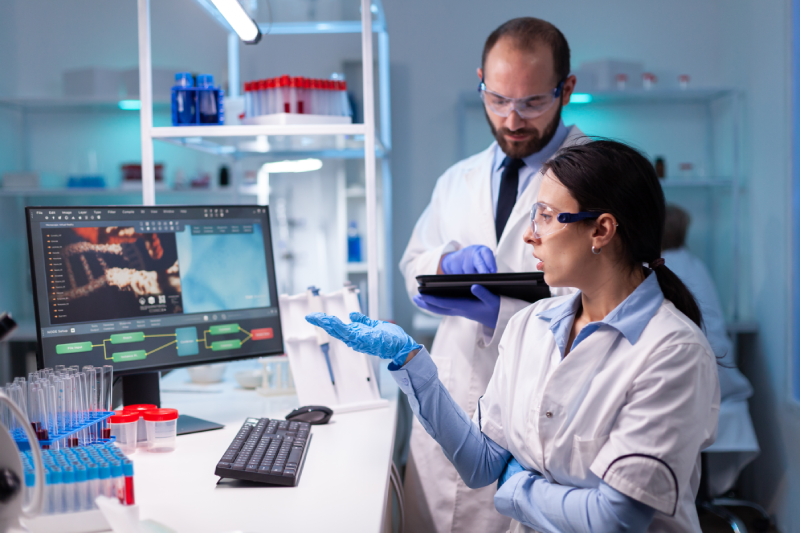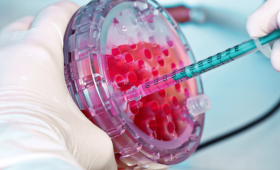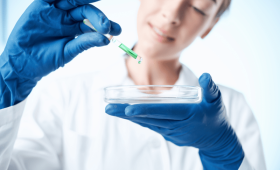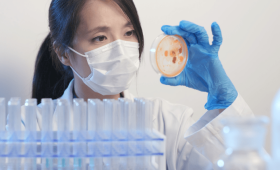Stem Cell Skin Rejuvenation Prices in Turkey
Turkey holds a global reputation in the field of aesthetic and regenerative medicine, especially for its stem cell applications. Skin rejuvenation with stem cells (most often performed using SVF derived from the patient’s own fat tissue or fibroblast cells) is considered an effective method for reversing signs of skin aging and promoting regeneration. This treatment aims not only to reduce wrinkles but also to improve skin tone, increase elasticity, and repair sun damage. The pricing in this process depends on numerous variables, such as the type of treatment, the area of application, and the quality of the technology used.
How Much Do Stem Cell Skin Rejuvenation Prices Vary?
Stem cell skin rejuvenation prices vary widely depending on the type of treatment and the center performing the application. Costs are generally higher than standard filler procedures due to the complexity of laboratory processing and cell counting, as they are typically autologous treatments derived from the patient’s own cells (fat stem cells or fibroblast culture). Prices for these aesthetic stem cell treatments in Turkey can start in the thousands of dollars range and increase, depending on clinic quality and package contents. These prices stand out for their cost-effectiveness at centers with international accreditations.
What Determines The Cost Of Stem Cell Skin Rejuvenation In Turkey?
The primary factor determining the treatment cost is the source of the stem cells used and the processing method. If Stem Cells Derived from Fat (SVF) are used, the cost increases due to the minimal liposuction procedure (fat harvesting) and the special kits required to isolate the cells. If fibroblast (Fibrocell) culture is performed, there is a weeks-long process of multiplying and storing the harvested tissue in the laboratory. Additionally, the size of the application area (is it just the face, or does it include the neck and décolleté areas?) and the number of treatment sessions also directly influence the total cost.
Why Is Autologous Stem Cell Therapy More Expensive?
Autologous stem cell therapy (using the patient’s own cells) is more expensive than donor cell therapies because the process is entirely personalized and laboratory-based. The treatment involves demanding stages such as cell collection (biopsy or fat harvesting) from the patient, multiplying (culturing) these cells under appropriate laboratory conditions (GMP standard), and quality control tests before re-application. The high cost of specialized personnel involved, sterilization standards, and the technological equipment used are the main factors contributing to the price increase. However, being autologous eliminates the risk of rejection.
What Is The Price Difference Between Fibroblast Culture And Fat-Derived Stem Cells?
There are price differences between fibroblast culture (Fibrocell) and fat-derived stem cell (SVF) applications. Fibroblast culture generally has a higher total procedure cost because it requires the long-term and controlled multiplication of cells in the laboratory. Conversely, while fat-derived stem cell application requires a surgical procedure (fat harvesting), it does not include the extra cost of the culturing process, as the cells are isolated and applied on the same day. The price preference is determined by the physician’s recommendation and the type of damage on the patient’s skin, and both offer different advantages.
How Many Sessions Of Stem Cell Skin Rejuvenation Are Required?
The number of sessions required for stem cell skin rejuvenation treatment varies from person to person based on the current condition of the skin, the degree of aging, and the desired outcomes. Most treatment plans typically include one primary application session, but especially in cases of deep wrinkles or noticeable skin damage, additional sessions at intervals of 3 to 6 months may be recommended to enhance the treatment’s effect and maintain long-term results. These booster sessions are particularly common in fibroblast application to provide a replenishment of cultured cells.
How Long Do The Effects Of The Treatment Last?
Although the longevity of stem cell skin rejuvenation treatment varies depending on the cell type used and the patient’s lifestyle, it generally provides a long-lasting effect. Since stem cells re-initiate the production of collagen and elastin, which are the fundamental building blocks of the skin, the results are more natural and last longer compared to temporary fillers. Optimal results are usually clearly maintained for 1-2 years, but as the cell aging process continues, maintenance treatments recommended by the physician may be necessary to sustain the effect.
Is The Hospital Stay Fee Included In The Treatment Price?
Since stem cell skin rejuvenation is generally an outpatient procedure, the treatment price does not include a classic hospital stay fee. Although the retrieval of fat stem cells (SVF) is a minimal surgical procedure, it is typically performed under local anesthesia, and the patient is discharged the same day. However, comprehensive health tourism packages offered to foreign patients may include logistical services such as airport transfer, luxury hotel accommodation, and interpreting services in the price. Therefore, the detailed list of services included in the price should be carefully checked when receiving a quote.
What Is The Age Limit For Stem Cell Applications?
While there is no strict upper age limit for stem cell applications, candidates expected to benefit most from the treatment are generally healthy individuals in the 30 to 65 age range. Within this age range, the skin’s regeneration capacity is still high, and the likelihood of responding to the collagen production triggered by stem cells is greater. Suitability for treatment is determined by an expert through a detailed evaluation that considers the presence of chronic diseases, skin elasticity level, and overall health status of the individual.
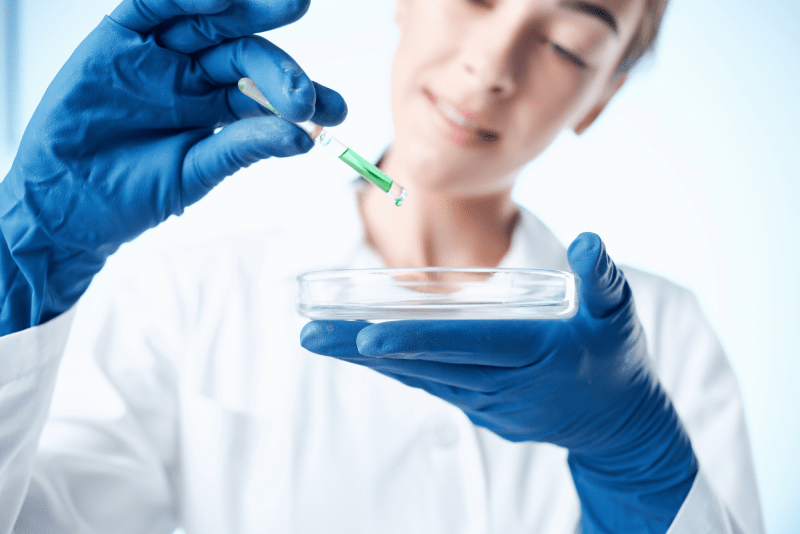
What Is The Price Advantage For International Patients?
Turkey offers a significant cost advantage for international patients regarding stem cell skin rejuvenation prices. These treatments, performed in laboratories of the same quality and with international accreditation, can be 50% to 70% lower than prices in Western European and North American countries. This price advantage stems from economic factors such as lower overhead costs for laboratory operations and specialized personnel. This allows patients to access treatment without compromising on quality.
Is Stem Cell Therapy More Expensive Than PRP Application?
Yes, stem cell therapy (Fibroblast culture or SVF) is generally more expensive than Platelet-Rich Plasma (PRP) application. The main reason is that PRP is obtained through a simple blood draw and centrifugation process, whereas stem cell therapy requires more complex laboratory procedures, special equipment, and long-term cell culture. While PRP provides growth factors that stimulate skin repair, stem cell therapy is a more comprehensive and costly approach due to its potential for direct new cell formation and tissue regeneration.
Are Pre And Post-Treatment Care Costs Included In The Price?
The costs of detailed skin analysis before treatment and follow-up care applied afterward vary greatly depending on the clinic’s package content. Some comprehensive packages may include the initial consultation, blood tests, necessary topical products, and a few follow-up sessions within the first year. However, long-term supplements, special skincare products, and additional sessions for maintenance treatments are often charged separately. Therefore, it is very important that the agreement between the patient and the clinics clearly specifies which services are included in the price.
Can Stem Cell Therapy Be Applied To The Entire Body?
Stem cell skin rejuvenation treatment can be safely applied not only to the face but also to other body areas showing signs of aging, such as the neck, décolleté area, and hands. Regeneration is aimed at every area where collagen and elastin loss occurs due to aging, by using these cells. The treatment cost will increase in direct proportion to the size of the application area. When applied to a larger area, the treatment will require more cell material or a longer session duration, and the total cost will increase accordingly.
Which Skin Problems Are Resolved With Stem Cell Therapy?
Stem cell therapy aims to resolve a wide range of issues that arise due to the skin aging process. These include the reduction of fine lines and wrinkles, the restoration of skin elasticity and firmness, treatment of sun damage and spots, and the repair of scars and acne marks. Especially fibroblasts enable the achievement of a younger, brighter, and smoother appearance by thickening the dermal layer of the skin and increasing collagen synthesis, thereby enhancing the overall quality of the skin.
Does The Success Of The Treatment Depend On The Skin Type?
The success of the treatment is not directly dependent on the individual’s skin type but rather on the current level of damage and elasticity of the skin. In severely damaged or completely inelastic skin, the potential for rejuvenation may be lower. However, stem cells can be used safely on all skin types, whether dark or fair, and have the capacity to trigger collagen production in every type of skin. Pre-treatment skin analysis and the setting of realistic expectations are important to maximize success.
Is The Fat Harvesting Procedure Painful?
The fat stem cell (SVF) harvesting procedure, or minimal liposuction, is performed under local anesthesia or light sedation, so the patient feels virtually no pain. Only a slight pressure or vibration may be felt during the procedure. After the anesthesia wears off, slight sensitivity or bruising may appear in the area where the fat was taken (usually the abdomen or hips), but this can be easily controlled with simple pain relievers. This minimal discomfort is temporary by nature of the procedure and heals quickly.
What Should Be Done To Increase The Longevity Of Stem Cell Treatment?
To increase the longevity of stem cell treatment, patients must pay attention to post-treatment skincare and lifestyle. Sun protection (using high-factor sunscreen), maintaining a healthy diet high in antioxidants, and avoiding smoking and alcohol support the regeneration process. Additionally, the regular use of supplemental vitamins or topical products recommended by the physician helps sustain collagen production and preserve the rejuvenation effect achieved for a long time.
How Are Stem Cells Applied To Intradermal Wrinkles?
Stem cells are usually injected precisely into intradermal wrinkles using fine needles (mesotherapy needles) or cannulas. The application is performed into the deeper layers of the dermis, beneath the damaged or wrinkled areas of the skin. The goal is for the injected cells to stimulate the fibroblasts in that region and trigger the production of new collagen and elastin fibers. These injections provide a natural rejuvenation look by plumping the wrinkles from within and allowing the skin to renew itself naturally.
When Can Daily Life Resume After Stem Cell Application?
The return to daily life after stem cell application is very short, depending on the method applied. After fibroblast or SVF injections, patients usually experience mild redness, swelling, or bruising lasting a few days. These side effects can be covered with makeup, and most patients can return to light activities or work the day after the application. Mild sensitivity in the fat harvesting area may last a few more days, but this does not restrict the patient’s general mobility.
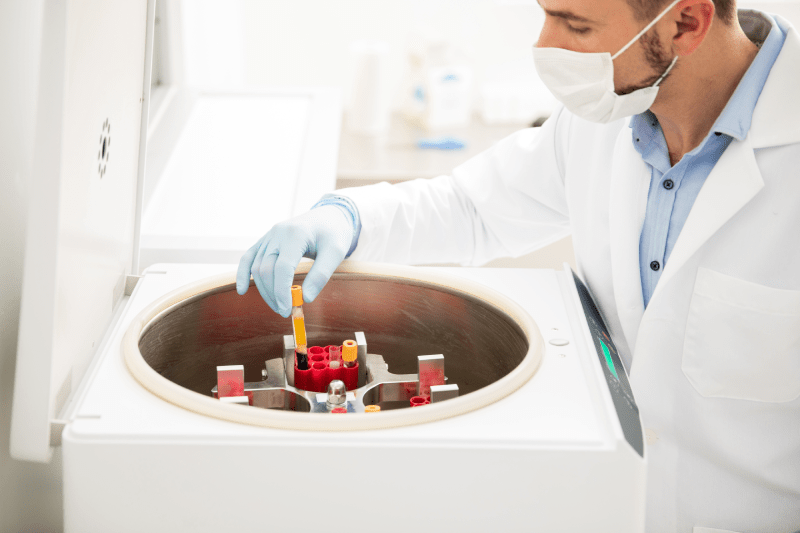
Do Stem Cell Laboratories In Turkey Comply With International Standards?
Yes, many laboratories and centers in Turkey that offer stem cell treatment and are authorized by the Ministry of Health operate in compliance with international quality standards (e.g., GMP – Good Manufacturing Practices). These accreditations guarantee that the processes of cell collection, processing, multiplication, and storage are carried out under the highest assurance of sterility and quality. This is a critical guarantee that ensures international patients feel secure regarding the reliability of the treatment.
How Many Fat Cells Are Needed For Stem Cell Skin Rejuvenation?
The amount of fat cells (if SVF is to be obtained) or tissue required for stem cell skin rejuvenation depends on the size of the application area and the targeted stem cell count. Generally, a very small amount (e.g., 50-100 cc) of fat tissue is sufficient. This minimal amount is taken from areas like the abdomen or hips. The goal is to obtain enough Stromal Vascular Fraction (SVF) or high-density fibroblast precursor cells from this fat tissue for skin rejuvenation; the precise quantity is determined according to laboratory standards.
What Preparations Should Be Made Before The Treatment?
Patients need to make some preparations before stem cell treatment. Blood-thinning medications (such as Aspirin) and certain vitamins (like Vitamin E) recommended by the physician may need to be stopped a certain period before the application. Additionally, to optimize skin condition, cessation of smoking and alcohol consumption and increased water intake are recommended before the procedure. If fat harvesting is planned, attention should be paid to adequate rest and hygiene the night before the procedure.
Can Stem Cell Therapy Be Combined With Filler Applications?
Yes, stem cell therapy and filler applications (e.g., hyaluronic acid-based fillers) can be combined and often support each other. Fillers provide immediate physical volume in areas of volume loss, while stem cells improve the skin’s quality, elasticity, and natural collagen production internally in the long term. This combination offers a holistic approach aimed at both achieving immediate aesthetic results and activating the skin’s natural rejuvenation mechanisms.
Is There A Risk Of Treatment Failure?
As with any medical procedure, there is a risk of not achieving the expected efficacy in stem cell skin rejuvenation treatment. Failure is generally not seen as a complete worsening but as a lower than expected rejuvenation and regeneration effect. This can be due to the patient’s advanced age, negative lifestyle factors such as smoking, or the cells not being multiplied in the laboratory with sufficient quality. Detailed physician assessment before treatment reduces these risks.
Is Stem Cell Therapy Effective Against Sun Spots?
Yes, stem cell therapy can show healing effects on sun spots (melasma and lentigo) and other pigmentation problems. While stem cells promote skin renewal, they also secrete growth factors that help normalize damaged melanocytes (pigment-producing cells) and reduce inflammation. This process significantly contributes to achieving a more homogeneous skin tone by lightening spots and evening out the skin tone.
Are Accommodation And Transfer Services Included In The Treatment Price?
Stem cell skin rejuvenation packages offered within the scope of health tourism in Turkey can often include attractive accommodation and transfer services for foreign patients in the price. These “all-inclusive” packages may cover VIP airport transfers, a few nights of accommodation in contracted luxury hotels, and in-hospital interpreting services. When receiving a customized price quote, clarifying the details of the health tourism package offered with a coordination company like Cure Holiday will be beneficial.
When Do The Results Of Stem Cell Skin Rejuvenation Start To Become Visible?
The results of stem cell therapy are not visible immediately as they depend on the skin’s self-renewal process; they require patience. Initial effects (increased skin radiance and moisture) may be noticeable within a few weeks, while the full effect resulting from the acceleration of regeneration and collagen production becomes pronounced 3 to 6 months after the application. The complete structural renewal process of the skin can continue for up to a year, so the best results are generally evaluated at the end of the first 6 months.
In Which Cases Is Stem Cell Therapy Not Applicable?
Stem cell therapy cannot be applied to patients with certain medical conditions. Major contraindications include a history of active cancer (especially within the last 5 years), active infection or severe inflammation in the application area, severe autoimmune diseases, and blood clotting disorders. Furthermore, women who are pregnant or breastfeeding, and individuals with a severe pathology in the area from which stem cells will be taken (fat or skin), are not considered suitable candidates.
Who Gets Better Results With Stem Cell Therapy?
Individuals expected to achieve better results with stem cell therapy are generally patients who are in the early or middle stages of skin aging, are non-smokers, and have a healthy lifestyle. Additionally, individuals with problems such as sun damage and uneven skin tone who aim for a natural-looking improvement achieve the most successful results. A good outcome depends on the skin’s regeneration potential still being high and the patient’s healthy tissue response.
Can Stem Cell Skin Rejuvenation Be Repeated?
Yes, stem cell skin rejuvenation treatment is a repeatable procedure intended to maintain long-term results. Maintenance sessions may be recommended, typically after 1 to 3 years following the initial application, based on an evaluation of the skin’s needs and the rate of return of aging signs. Patients using fibroblast culture, who have frozen reserve cells in the laboratory, can usually have repeat sessions more easily and quickly.
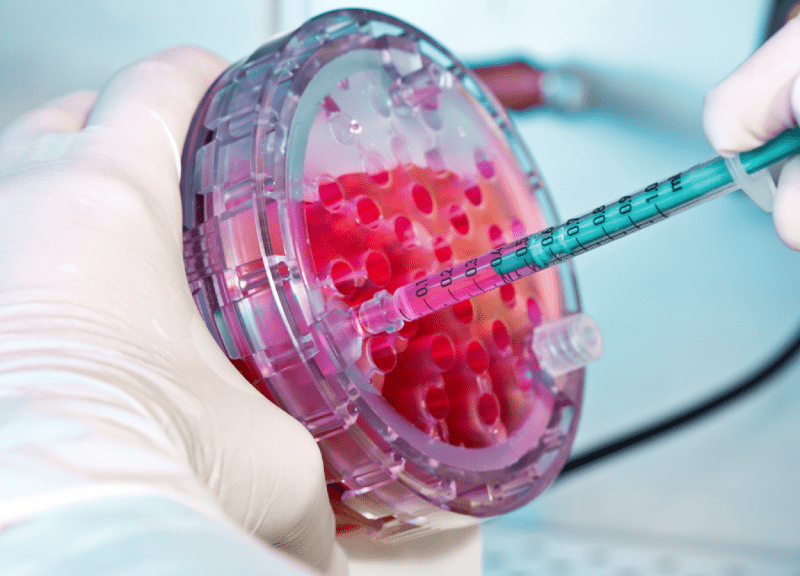
What Is The Price Difference Between Stem Cell Therapy And Botox And Filler?
The total cost of stem cell therapy is generally much higher than single-session Botox or standard filler applications. This is because Botox and fillers are only the injection of a substance, while stem cell therapy involves surgical harvesting, laboratory processing, and the use of autologous (self-derived) cells. However, the effect offered by stem cell therapy is long-term regeneration and structural improvement of the skin, differentiating it from fillers and Botox in terms of value and longevity of effect.
What Types Of Stem Cells Are Used In Skin Rejuvenation?
The most common types of stem cells used in skin rejuvenation are Fibroblast Cells (cultured from a skin biopsy) and Adipose-Derived Stromal Vascular Fraction (SVF) Cells. Fibroblasts directly improve skin quality by producing collagen and elastin, while SVF contains stem cells as well as cells that secrete restorative and growth factors. Which type will be used is determined by the physician’s experience, the skin’s needs, and the patient’s preferences.
Is Stem Cell Skin Renewal Risky?
Stem cell skin renewal is a procedure with a very low risk because the patient’s own cells (autologous) are generally used. The most common risks are temporary swelling, bruising, and redness. The risk of allergic reaction or body rejection is practically non-existent due to autologous use. Serious complications (infection, bleeding) are very rare, and the risk is minimized when performed in a specialized center under sterile conditions. Physician risk assessment before treatment is important.
Why Must Smoking Be Quit Before Treatment?
Smoking must be absolutely quit before treatment because smoking severely reduces the effectiveness of stem cells and the skin’s healing capacity. Nicotine and other toxins in cigarette smoke impair blood flow in capillaries, lower oxygen levels, and disrupt collagen production. This situation reduces the engraftment and regeneration potential of the transplanted stem cells, negatively affecting the long-term success of the treatment, hence cessation is mandatory.
Is Long-Term Follow-Up Mandatory For Stem Cell Therapy?
Yes, long-term follow-up of stem cell therapy is mandatory for evaluating the longevity of the results achieved and managing the skin aging process. Patients are generally advised to attend regular check-up sessions within the first year and then a follow-up visit ** once a year**. These follow-ups include skin analysis and, if necessary, planning of additional supplements or maintenance treatments. This disciplined follow-up serves both to preserve the results and maintain overall skin health.
With Which Other Aesthetic Procedures Can Stem Cell Therapy Be Combined?
Stem cell therapy can be safely combined with many other aesthetic procedures in the field of skin rejuvenation. These combinations include volume enhancement with fat injections (lipofilling), skin surface renewal with laser treatments, spot treatment with IPL, and even facelift surgeries. Stem cells increase the success of combined treatments as they have the potential to shorten the healing period of surgical interventions and improve the quality of scars.
Why Do Stem Cell Skin Renewal Prices Vary From Country To Country?
Stem cell skin renewal prices vary greatly from country to country because pricing depends on laboratory operating costs, expert physician and personnel fees, health insurance regulations, and technological infrastructure investment costs. Despite having high-quality infrastructure, Turkey can offer globally standard services at much more competitive prices due to lower personnel and operational costs compared to Western countries.
How Do Stem Cell Applications Improve Skin Tone?
Stem cell applications improve skin tone in two main ways: Firstly, the cells increase blood circulation and microcirculation beneath the skin, giving the skin a healthier and brighter appearance. Secondly, they reduce inflammation that causes pigmentation problems and secrete growth factors that encourage the repair of damaged cells, reducing the appearance of sun spots and uneven tone. This regenerative effect enables the skin to have a fresher, livelier, and more even tone.
Are Post-Stem Cell Treatment Creams Important?
Yes, care creams and serums used after stem cell treatment are extremely important in supporting the success of the treatment. These products, recommended by the physician, typically contain antioxidants, peptides, and growth factors. These components support the activity of the injected stem cells, maximize collagen production, and actively aid the skin’s repair process. Regular and correct product use significantly increases the longevity of the results obtained.
Stem cell skin rejuvenation is an innovative approach for those seeking long-term and natural results. Turkey is one of the most suitable options with its specialized teams and competitive prices in this field.
To create the most appropriate stem cell treatment plan for you, evaluate price quotes, and confidently manage all your travel arrangements, you can contact Cure Holiday.
